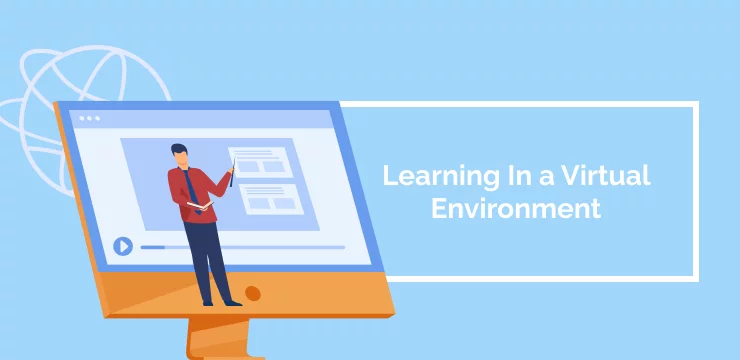
Navigating a large-scale business transformation is not easy. That’s why you need a comprehensive change management strategy. But how do you know if your strategy is effective?
That’s where Harvard’s change management simulation comes in. This article will explain how Harvard’s simulation can help manage and grow your change management strategy. We’ll explore how companies enhance their change projects using the Harvard Business Publishing tool.
What Is The Harvard Change Management Simulation?

The Harvard Change Management Simulation is a single-player simulation that allows users to test the effectiveness of a change initiative. The players choose a role, like choosing a character in a video game. You play as an agent of change, either a CEO or Director of Product Innovation. The simulation takes place at a sunglass manufacturing firm.
During the simulation, you encounter the challenges of conducting a change initiative. The aim is to convince key members of the business to adopt your change project. You guide the organization through a four-stage pathway:
- Change awareness
- Interest
- Trial
- Adoption
You have 96 simulated weeks to achieve your goals. During each stage, you aim to achieve a high change efficiency ratio. The simulation assesses your leadership style, how well you maintain credibility and how many adopters you obtain.
Why You Should Use A Change Management Simulation
The most significant benefit of simulating your change management strategy is the freedom it gives you. It’s the best way to see what works and what doesn’t. This is important because research shows that there isn’t just one approach to business transformation.
There are many components to a business that must work in unison during a change project. Uniting these decentralized components is difficult for many companies. They fail to focus on the human side of transformation when dealing with such a significant scope change.
As Mckinsey suggests, ‘Companies can achieve cohesion among decentralized business units and transform their cultures—but only if senior leaders take time to identify and commit to a common cultural goal.’
How Does Harvard’s Change Management Simulation Affect Real-World Change?
Harvard’s simulation is an excellent tool for trialing your company’s change project. You can experiment with different scenarios to find the right approach for your business. If you’re struggling to decide on the best change management strategy, test each of them out on the simulation to find which works best.
In short, the Harvard change management simulation is an opportunity to explore the challenges of a change initiative with none of the risks.
Trialing your strategy in the safety of a simulation is a great way to prepare for real-world disruptions. It’s also a great way to obtain executive buy-in. You can demonstrate the effectiveness of your proposed strategy and persuade key members.
The last thing executives want is to waste time on complex change initiative investments. If you show them that your strategy works, you’ll be more likely to obtain executive buy-in.
Overcoming Resistance Through the Change Management Simulation
Mistakes and resistance to change is the most common reason businesses fail to implement a large-scale change transformation. Employees, customers, and executives resist change because of a lack of support. Change management is about increasing support through comprehensive training and clear lines of communication.
By playing the Harvard change management simulation, you’ll better understand how to address resistance and support employees. The simulation forces you to consider how your decisions impact workers.
Are you encouraging employee engagement? Are you offering the right amount of support and training? These are questions you’ll answer throughout the simulation.
What To Expect After Experiencing The Simulation

The simulation measures how well you maintain credibility and how many adopters you have by the end of the session. Use the opportunity to try out several approaches to find which one attracts the most adopters. It’s better to fail now than during the roll-out of your real change initiative.
During the simulation, it’s crucial to analyze your progress. Note what works and doesn’t and how you can improve next time. Track the effects of each decision you make. How do your choices affect your credibility in the organization?
Tips For A Successful Simulation Experience

Make sure you’re prepared to get the most out of the simulation experience. You should already have the foundation of a change management strategy. Use your roadmap to navigate through the simulation for the best experience.
After completing the simulation, you’ll go through a debrief, which provides analytics on your performance. It’s best to discuss your experience with someone, an executive or management team leader, for a more objective view.
Finally, remember the elements of a successful change management strategy. Focus on the needs of individual adopters, encourage them to use training software such as DAPs, and prioritize communication throughout the organization.
Learning In a Virtual Environment

Change management can be complex. Depending on the relative urgency of your change project, you’ll find different uses for the variety of change management tools that you use. For example, during the adoption phase, you’ll need a more targeted approach to employee behavior and demands.
The advantage of using a simulation is that you can experience the relative power of the change agent in the safety of a virtual environment. You can experiment with different scenarios, try out variations of change agents, and see how adopters respond to your decisions.
As the digital revolution transforms the workplace and processes continue to digitalize, an excellent opportunity for learning arises. The Harvard Business Publishing tool is an obvious choice for practicing change management in the digital age.
WalkMe Team
WalkMe spearheaded the Digital Adoption Platform (DAP) for associations to use the maximum capacity of their advanced resources. Utilizing man-made consciousness, AI, and context-oriented direction, WalkMe adds a powerful UI layer to raise the computerized proficiency, everything being equal.



